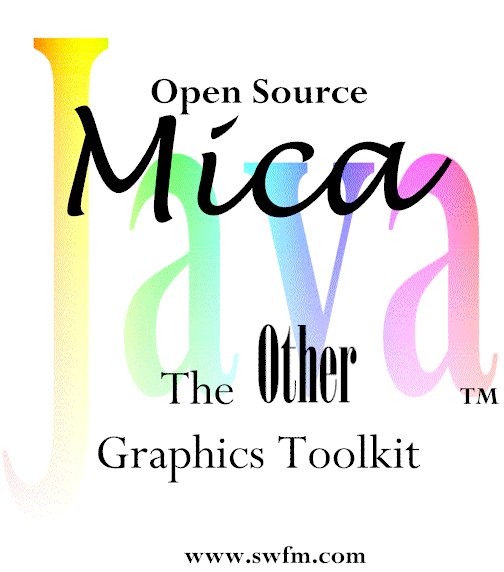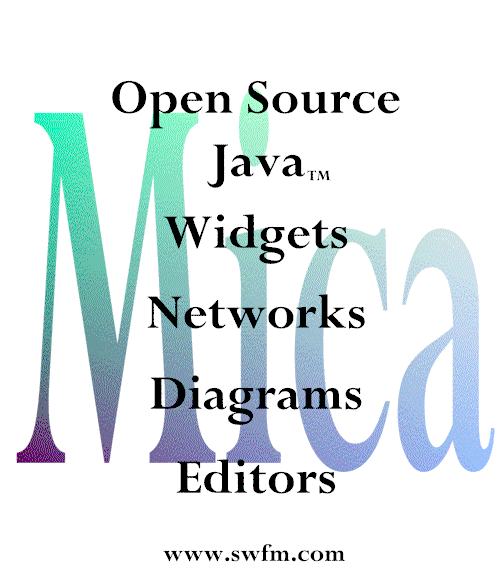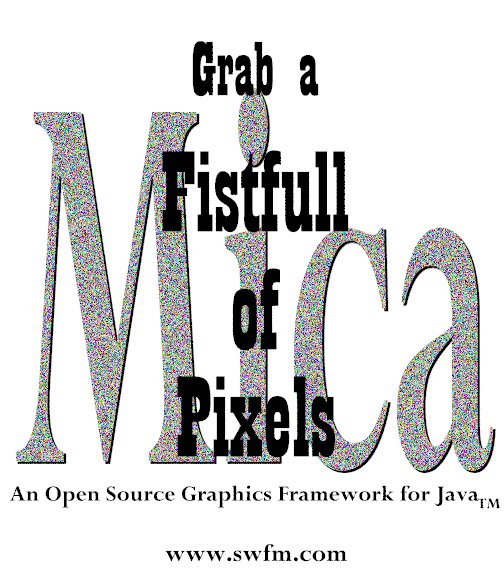| |
|
| |

--------Classic--------- |
| April 7, 2005 |
|
| |
. |
| |
|
| |
Mica has complete support for
advanced features such as infinite undo/redo, zoom and pan, network graph
layouts and interactive graph templates, connections and connection
points, annotations and annotation points, event handling and action
percolation, layers and layer tabs, arrows, shadows, cut/copy/paste
to/from clipboard, multiple printable pages, postscript, jpeg, and pdf
output, rulers, toolhints, status bars, tool bars, default save/load
to/from ASCII files, complete working network and diagramming
editors, graphics editor toolkit, and more... |
| |
|
| |
Mica is evolving and becoming a part of the
Obsidian Framework |
| |
Mica classic will
still be around, but Mica 2.0 will be stripped down,
partitioned into separate libraries, and with the MiModel
front end replaced with the binders and generic data
structures of the Obsidian Framework - and all in declarative XML. |
| |
|
| |
 |
| |
|
| |

 |
| |
|
| |
|
| |
|
| |
|
|
|
|
|
|
|
|
|
Documentation
|
White Paper
(PDF, 124 pages, 490 K)
Overview
(PDF, 18 pages, 73K) |
| |
| |
|
A Java
Object-Oriented 2D Vector Graphics and User Interface Framework.
Includes diagramming and network graphics editors. Free with source
code. |
| |
| |
| Mica is a 2D,
high-level, full-featured, object-oriented, hierarchical,
structured, resolution-independent, mixed graphics and user
interface widget library with multiple levels of drawing
abstraction written completely in Java.
2D
The system provides extensive
support for rendering and manipulation of vector and raster
graphics in two dimensions
High-level
A highly-customizable 'Graphics
Window Object' is provided that supplies much of the
functionality associated with 2D drawing programs. A Graphics
Object Model is also provided that abstracts general node-link
data structures.
Full-featured
Many graphics shapes, user
interface widgets, interactors, and demo applications are
included.
Object-oriented
All graphics shapes, user
interface widgets, interactors, layouts, connections, etc. are
objects and sub-classable by the programmer.
Hierarchical
Graphics shapes and user
interface widgets can be arbitrarily arranged in
container-part and reference-part directed acyclic graphs.
Structured
Graphics shapes and user
interface widgets can be connected together with first-class
connection objects into any number of directed or undirected
(network) graphs.
Resolution-independent
The sizes and locations of
graphics shapes and user interface independent widgets are
specified in device-resolution-independent floating point
coordinates and so have the same appearance and relative size
regardless of the size or dots-per-inch of the particular
screen or printer used for display.
Mixed graphics
Graphics shapes and user
interface widgets share the same coordinate space, the same
API and are of the same basic type.
Multiple levels
A variety of
functionality/performance trade-off options are available from
heavy-weight, full-featured graphics shapes to
very-light-weight simple graphics shapes to an immediate
rendering mode (in resolution-independent coordinates).
Written in Java
The robustness, ease-of-use,
portability and the other buzzwords of Java are inherited by
this software.
|
|
|
|
|